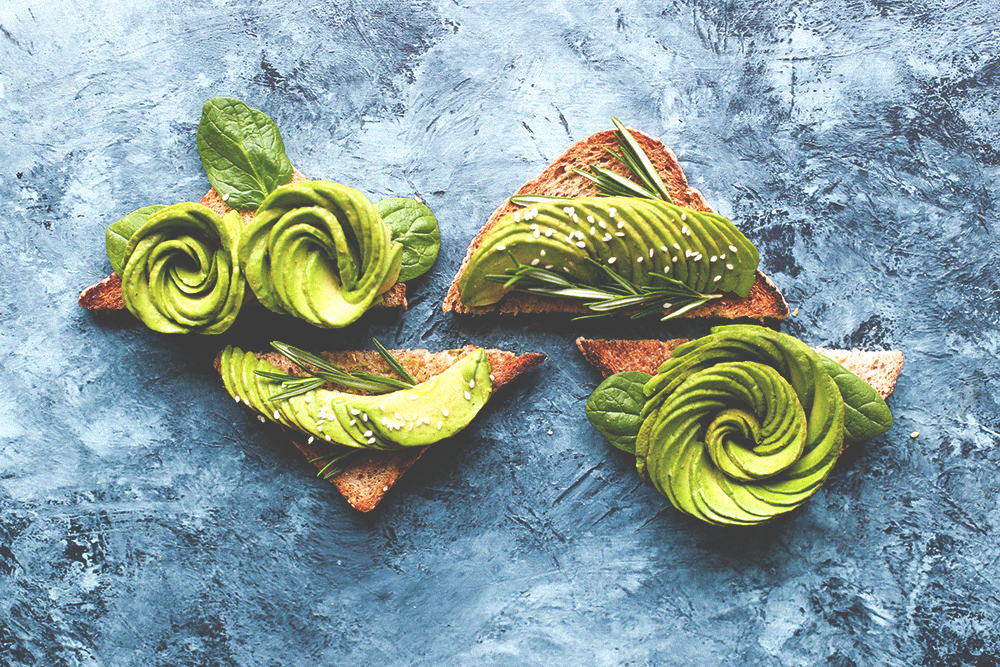For many years, fat was unfairly singled out as THE dietary bane for a healthy lifestyle. Let’s break down both the good and bad.
BY: KALEIGH MCMORDIE, MCN, RDN
It’s time we have a talk about fat. I’m not talking about your weight (which doesn’t matter anyway, that’s just a number!).
I’m talking about dietary fat, the kind that comes from food.
For decades, you’ve been told fat is bad. “Stay away from fat. Low-fat is better.” So we should just keep avoiding anything with fat in it right? Wrong. As you’ve probably heard, fat is actually healthy and you need it in your diet.
Let me explain.
Some kinds of fat really are not healthy, just like we thought. Those include trans fats (those are created in a lab through hydrogenation) and, when in excess, saturated fat. These types of fats are the harmful ones that lead to things like heart disease, high cholesterol and clogged arteries when consumed in excess. And yes, you actually should try to avoid trans fats at all costs because your body doesn’t know how to process them and they are, in fact, damaging.
(Hint: If the label has anything “hydrogenated”, then it’s got trans fat.)
But other kinds of fats are actually great for you, which can keep your heart healthy and even help you manage your weight. These healthy fats are the unsaturated fats, in particular monounsaturated fats and Omega-3 polyunsaturated fatty acids. Let’s break it down a bit:
Monounsaturated fats are the healthy fats found in extra-virgin olive oil, avocados, nuts, and peanut butter. They help lower your LDL or “bad cholesterol” and raise your HDL or “good cholesterol,” which lowers your risk for heart disease.
Omega-3s reduce the risk of heart disease by controlling your triglyceride levels and helping mitigate inflammation, blood pressure, and possibly arrhythmias. Research is ongoing, but Omega-3s may even decrease depression and the risk for cognitive decline in dementia. Another important thing to remember is that your body can’t make these fats on its own, so you have to get them in your diet for your body to function. Common sources of Omega-3’s are fatty fish (like salmon, tuna, trout, and mackerel), walnuts and flaxseed.
Now that you know what the healthy fats are, you should know how much you need:
While these healthy fats have been proven to help with weight management (they help keep you feeling satisfied), remember that going overboard on anything will contribute to weight gain. Since fats are naturally higher in calories, it’s important to keep your portions in check if you are trying to manage your weight.
A few examples of servings are:
- A serving of nuts is about 1 ounce (or 1/4-1/3 of a cup)
- Peanut butter is 2 tablespoons.
- One serving of fish is about 4 ounces.
- A serving of avocado is about an ounce, or 1/5 of a medium avocado.
- The amount of oil you use for cooking and salad dressings is plenty. No need to gulp spoonfuls.
Some great ways to add healthy fats in your diet are:
- Cook fish at least twice a week.
- Snack on nuts or fruit with peanut butter.
- Add avocado or ground flaxseed to smoothies or salads
- Replace butter or shortening with olive oil when cooking.
Little changes like these can add up to a healthier heart for you in the long run. Plus healthy fats are delicious for your tastebuds!
Kaleigh McMordie, MCN, RDN is a Texas-based Registered Dietitian and food enthusiast who shares delicious recipes for those who seek a healthy, vibrant life. By focusing on nourishment without giving up the joy of good food, Kaleigh helps others attain a balanced, wholesome approach to life that brings people together. Learn more about Kaleigh and visit her at Lively Table.

